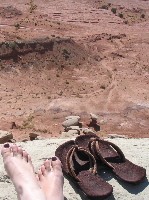Galaxies!! Part Two
Waaaaay back in June—as in, last June—I wrote a long post explaining the background, mostly about galaxies, needed to understand the work I've done on the connection between how strongly barred a galaxy is and what kind of structure its circumnuclear dust takes on. (If you want to understand the results below, I recommend reading the background post first. Also, the poster for the conference I presented this at last year can be found here.) The paper was published on December 1, and it is this paper that I will be presenting next week for the oral portion of my general exam, so I figure it's about time I get around to explaining to y'all some of the actual, you know, results.
The first step in preparing next week's talk was to re-read this paper I haven't touched in nearly a year. This has been fun, not only for the "wow! galaxies are cool!" aspect, but also because I can think things like, " 'Employ'? We employ this technique? Didn't we really just use it??" Also, all of those figures I thought were gorgeous a year ago? Turns out the font is too small on most of them, and at least one of them has a typo (as well as one table).
Our first main result was that tightly wound nuclear dust spirals are primarily found in galaxies lacking bars. This isn't all that surprising due to boundary conditions: for the dust in a circumnuclear spiral to connect to the (radial) dust lanes in a bar, the spiral must unwind somewhat, and tightly wound spirals are not somewhat unwound. So what kinds of circumnuclear morphologies do strongly barred galaxies take on? One common feature is what we term "large grand design" (LGD) spiral structure. A LGD spiral has two prominent symmetric spiral arms which, in 90% of our LGD galaxies, distintegrate before reaching the galaxy nucleus. One frequent end for these spiral arms is at a circumnuclear starburst ring. A circumnuclear starburst ring is just what it sounds like: a ring of intense star formation and thick dust surrounding the galaxy nucleus, like the example to the right. Here, the LGD structure are the dark dust lanes on the top left and bottom right of the image, which connect onto the ring itself. Inside the ring, we see a loosely wound nuclear spiral which is distinct from the ring itself, and is likely to be "native" dust; that is, the bar is probably ineffective at funneling material to the very center of this galaxy. In our most strongly barred galaxies, those lacking LGD spirals simply have very chaotic centers (at best, a chaotic spiral), potentially with a lot of ongoing star formation.
So what kinds of circumnuclear morphologies do strongly barred galaxies take on? One common feature is what we term "large grand design" (LGD) spiral structure. A LGD spiral has two prominent symmetric spiral arms which, in 90% of our LGD galaxies, distintegrate before reaching the galaxy nucleus. One frequent end for these spiral arms is at a circumnuclear starburst ring. A circumnuclear starburst ring is just what it sounds like: a ring of intense star formation and thick dust surrounding the galaxy nucleus, like the example to the right. Here, the LGD structure are the dark dust lanes on the top left and bottom right of the image, which connect onto the ring itself. Inside the ring, we see a loosely wound nuclear spiral which is distinct from the ring itself, and is likely to be "native" dust; that is, the bar is probably ineffective at funneling material to the very center of this galaxy. In our most strongly barred galaxies, those lacking LGD spirals simply have very chaotic centers (at best, a chaotic spiral), potentially with a lot of ongoing star formation.


No comments:
Post a Comment